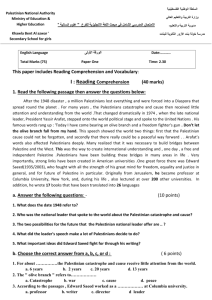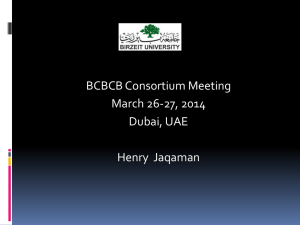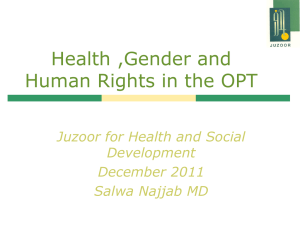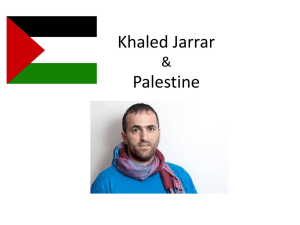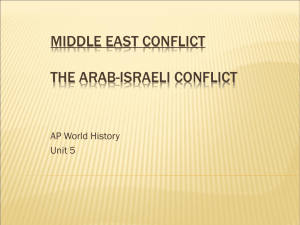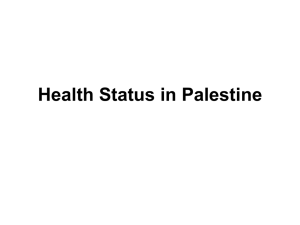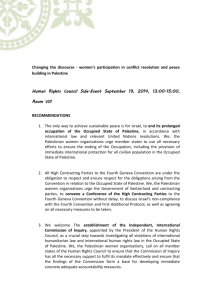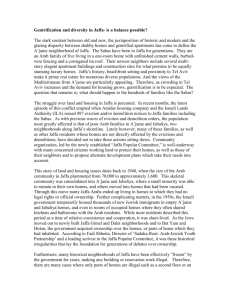Abstract
advertisement
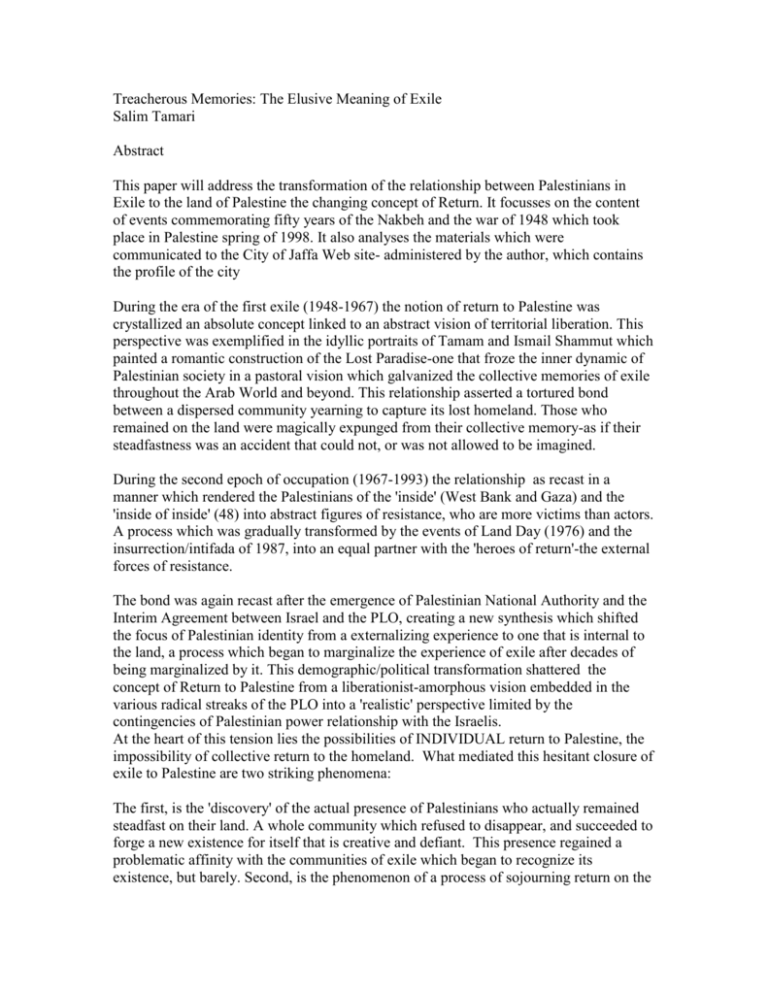
Treacherous Memories: The Elusive Meaning of Exile
Salim Tamari
Abstract
This paper will address the transformation of the relationship between Palestinians in
Exile to the land of Palestine the changing concept of Return. It focusses on the content
of events commemorating fifty years of the Nakbeh and the war of 1948 which took
place in Palestine spring of 1998. It also analyses the materials which were
communicated to the City of Jaffa Web site- administered by the author, which contains
the profile of the city
During the era of the first exile (1948-1967) the notion of return to Palestine was
crystallized an absolute concept linked to an abstract vision of territorial liberation. This
perspective was exemplified in the idyllic portraits of Tamam and Ismail Shammut which
painted a romantic construction of the Lost Paradise-one that froze the inner dynamic of
Palestinian society in a pastoral vision which galvanized the collective memories of exile
throughout the Arab World and beyond. This relationship asserted a tortured bond
between a dispersed community yearning to capture its lost homeland. Those who
remained on the land were magically expunged from their collective memory-as if their
steadfastness was an accident that could not, or was not allowed to be imagined.
During the second epoch of occupation (1967-1993) the relationship as recast in a
manner which rendered the Palestinians of the 'inside' (West Bank and Gaza) and the
'inside of inside' (48) into abstract figures of resistance, who are more victims than actors.
A process which was gradually transformed by the events of Land Day (1976) and the
insurrection/intifada of 1987, into an equal partner with the 'heroes of return'-the external
forces of resistance.
The bond was again recast after the emergence of Palestinian National Authority and the
Interim Agreement between Israel and the PLO, creating a new synthesis which shifted
the focus of Palestinian identity from a externalizing experience to one that is internal to
the land, a process which began to marginalize the experience of exile after decades of
being marginalized by it. This demographic/political transformation shattered the
concept of Return to Palestine from a liberationist-amorphous vision embedded in the
various radical streaks of the PLO into a 'realistic' perspective limited by the
contingencies of Palestinian power relationship with the Israelis.
At the heart of this tension lies the possibilities of INDIVIDUAL return to Palestine, the
impossibility of collective return to the homeland. What mediated this hesitant closure of
exile to Palestine are two striking phenomena:
The first, is the 'discovery' of the actual presence of Palestinians who actually remained
steadfast on their land. A whole community which refused to disappear, and succeeded to
forge a new existence for itself that is creative and defiant. This presence regained a
problematic affinity with the communities of exile which began to recognize its
existence, but barely. Second, is the phenomenon of a process of sojourning return on the
part of the third generation of exile. A generation that lived the Nakbah (catastrophe) in
the imagination of its ancestors without actually experiencing the lived dimensions of
Palestine as an indigenous social formation-except as a colonial experience (the West
Bank and Gaza), or as a military occupation (Lebanon), or as an absence of normality
(the refuge of a hostile Arab world). The best expression of this (re)discovery lies in the
work of the poet Mureed al-Barghouti in his ironic articulation of the alienating new
return to Palestine ('Testimony of return to the village of Deir Ghassaneh'-alKarmil), and
the consuming guilt towards those who remained in Palestine ('Ra'aytu Ramallah-Cairo,
1997).
An electronic Jaffa Forum, created in 1995, gathered a number of unique testimonies by
Palestinian intellectuals expressing their various reactions to the idea of returning to
Jaffa, and attempting to interpret what happened in 1948 to this dismembered city. These
testimonies, enhanced by the technologies possibilities of bringing Palestinians together
from four continents, and 22 countries, contain contrasting, overlapping, and conflicting
visions of the Palestinian experience, centered the meaning of exile, and return. They
express variously:
***the internal alienation of Palestinians who remained in Jaffa
***the experience of return to Jaffa, by those exiles who refuse to
acknowledge what happened to the city
***the attempt by exiled intellectuals (mentally and physically) to
reconstruct what happened to them and to the city
These overlapping visions include the difficult process of recognizing the Other and
coming to term with his/her experience; it includes:
---grievances by current residents of Jaffa against their exiled compatriots who
'abandoned' the city, neglected its present predicament, while immortalizing its past.
---attempts by refugees from Jaffa to recapture their past and to link it with the existing
city
---attempts by Jaffites to visualize the Israeli Jew and to construct a new relationship with
him; one that vacillates between conception of occupier/usurper and a neighbour with
whom there are possibilities of dialogue and coexistence What dominates in this debate
/vision is a strong sense of LOCALISM by Palestinians who have been consumed by
their universal condition. A universalism that reduced all Palestinian exile to a collective
fate, in which the particular narratives were lost. Jaffa reappears in these polemics as a
unique Mediterranean Arab city: established by Abu Nabbut in the era of the postNapoleonic modernity, and revived as a late Ottoman city made up of a core that attracted
waves of merchants, farmer, artisans, and workers from the various regions of Palestine,
and the Syrian and Egyptian ports. A city that emerged as a dynamic, creative and
combative centre of urban Palestine, only to be conquered, and dispersed by war. Its total
demise was halted by a residue of its remaining population who succeeded in their
steadfastness to bring about its current revival as an arena of encounter between exiled
memories and segmented presence.
